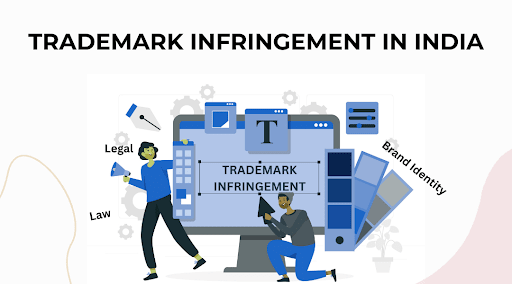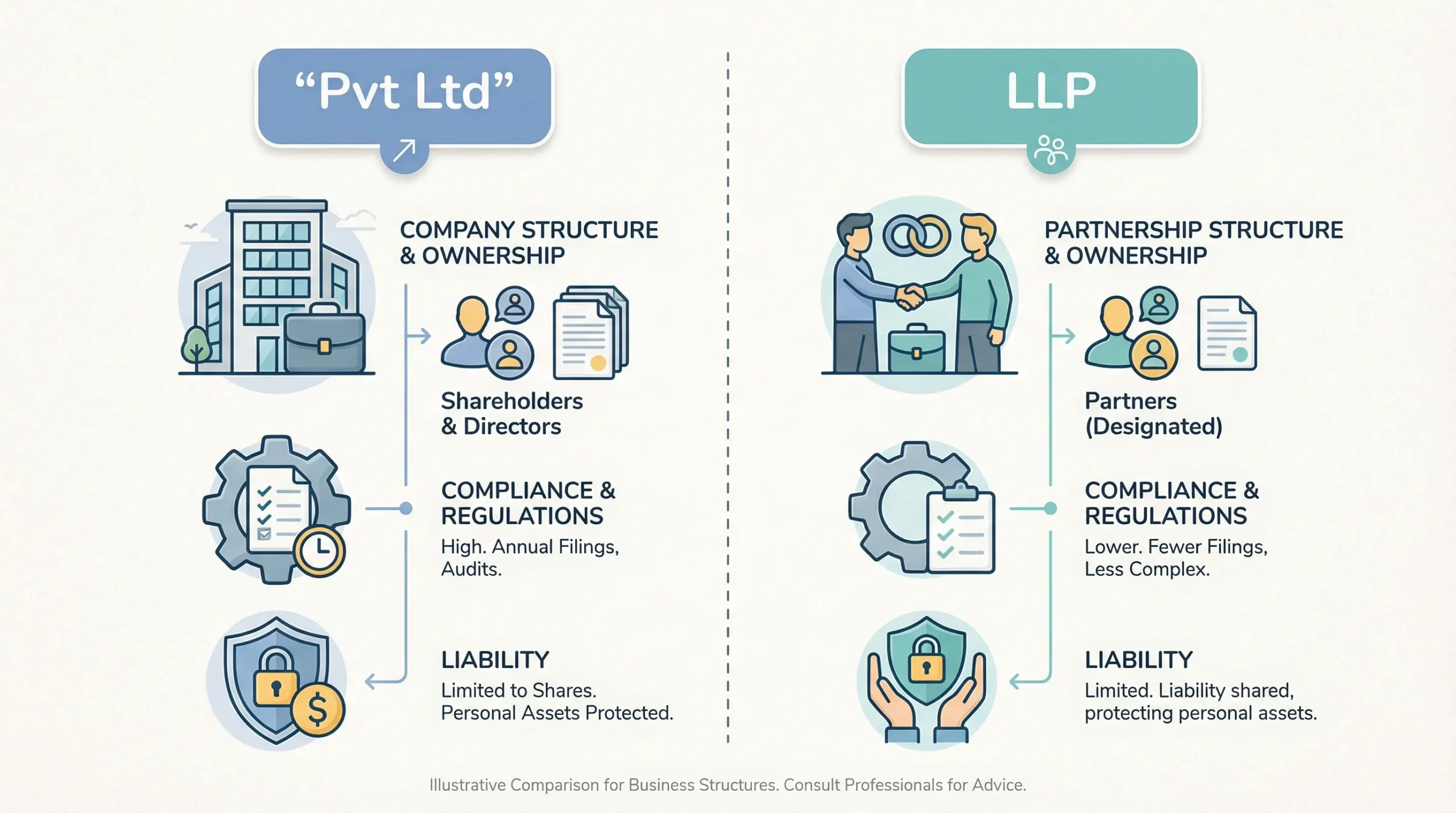Trademarks play a very important role for any business because they help make their products or services stand out from the rest of the products in the market. But someone can use your logo, tagline in a slightly different manner to manipulate the customers, which can bring losses. This is called trademark infringement. This can confuse your customers and spoil your brand’s reputation.
If you feel that somebody is misusing your trademark illegally, then it is your responsibility to file a legal case immediately and firmly. Here in this article, we are providing you with a clear and understandable concept of what trademark infringement is and how you can identify it. Solutions have also been provided here for tackling infringement of trademarks in India. Ensure to read all the guidelines for the infringement step by step.
What Are The Legal Steps For Trademark Infringement?
Trademark infringement cases in India happen quite a lot. It occurs when one person uses a trademark belonging to another in such a manner as to confuse consumers. They might alter the logo, name, or slogan a little bit and use it on their own. The wrong use of a trademark can bring loss.
You must identify the infringement and recognise the individual who has been using your trademark illegally. Then, you have to issue a legal notice to them to stop using your registered trademark. Also, you can initiate legal proceedings if they do not pay heed to your legal notice.
What To Do If Someone Uses Your Trademark?
Infringement of trademarks is no longer a new thing in India. But there are certain ways through which you can take legal action. Below, we have provided a detailed process that you can follow for trademark infringement:
1. Collect Evidence-
First, begin gathering proof of your trademark being used without authority. This may be anything, such as screenshots, domain names, or social media posts etc. Ensure that you record the date and information regarding when you first saw the infringement.
2. Verify Ownership and Validity-
Make sure your mark is valid, registered, and being used. If you’ve not yet registered your mark, you can proceed legally under common law if you can establish usage and market reputation.
3. Consider the Type of Infringement-
Identify if the infringement has been done purposefully or not. At times, companies incidentally use like marks. Looking at intent guides your reaction.
What Is The Remedy For Infringement Of Trademarks?
1. Write a letter requesting someone to stop specific actions
A cease and desist letter usually serves as the initial formal step. It informs the party in violation and demands that they stop using your trademark. Make sure the letter includes:
- Evidence of trademark registration and ownership
- Description of the infringing activity
- A request to stop use within a particular time period
- Potential legal repercussions for non-compliance
- If the infringer acquiesces, this can be time- and expense-saving.
2. Start Legal Proceedings
Legal action follows when the cease and desist letter does not work. Commence suit in a court having jurisdiction. For India, this would be under the Trademarks Act, 1999, and for the U.S., the Lanham Act.
Trademark Violation Legal Process in India
1. Hire a Trademark Attorney
Consult a good intellectual property attorney to evaluate your case and help you through the litigation process.
2. File a Suit
- Draft a complaint for a law that sets forth:
- Your ownership of the trademark
- Evidence of the infringing act
- Damages incurred
- Relief sought (injunction, damages, etc.)
The court might also want you to give evidence of consumer confusion or reputation damage.
3. Interim Reliefs
You may be able to obtain interim relief to avoid any further damage or loss. In this regard, the unauthorized use of infringement should be stopped until the case is heard in court.
How To File A Trademark Infringement Case?
The court can grant the following remedies:
1. Injunction
A court order to prevent the infringer from using the mark forthwith.
2. Damages or Account of Profits
Monetary compensation for losses incurred or an account of profits made by the infringer.
3. Destruction of Infringing Goods
The court can order the destruction or seizure of goods, packaging, and advertising materials with the infringing mark.
4. Legal Costs
The infringer can be required to pay your legal costs.
Trademark Dispute Resolution
Here is a simplified overview of the legal process:
- Notice and Cease and Desist Letter
- Filing of Suit
- Hearing for Interim Relief (Injunction)
- Filing of Written Statement by Defendant
- Evidence and Witness Examination
- Final Hearing
- Judgment and Decree
What Steps Can You Take to Protect Your Trademark?
There are many paths through which you can protect your brand and avoid any infringement of trademark. Even though court litigation is the normal route, there are others that you can pursue for:
1. Mediation and Arbitration
In others, mediation or arbitration is favoured for quicker resolution. It’s less formal and potentially quicker than standard litigation.
2. Domain Name Disputes
If your case of trademark infringement is one for domain names, you can proceed to the WIPO Arbitration and Mediation Centre under the Uniform Domain Name Dispute Resolution Policy (UDRP).
3. Monitor For Infringement
Consistently monitor the market to check if anyone is illegally using your trademark or not. Take immediate action if you find any such cases.
4. Use Symbols
Use ™ for marks after applying that are not registered, and ® for registered marks. This will help people to sort out their legal rights on the brand.
How To Respond To Infringement of Trademark?
Proactive measures to defend your mark are:
- Trademark Registration: Register your trademark in all nations where you are doing business. This provides you with exclusive rights and a better legal argument.
- Trademark Monitoring: Keep your eye on the marketplace, social media, and domain registrations to spot potential infringements.
- Renew Your Trademark: Most countries require trademark renewal every 10 years. Letting them lapse can weaken your claim.
- Use TM and ® Symbols: Use ™ for marks that are not registered and ® for registered marks. This alerts the public to your legal rights.
- Send a Cease and Desist Letter: A cease and desist letter is the initial formal action to inform the infringer of your rights and to require them to cease the unauthorized use. It should contain:
a. Evidence of ownership of your trademark
b. Evidence of infringement
c. A clear requirement to discontinue using the mark
d. A cutoff date for compliance
Consequences Of Trademark Infringement Cases In India
For someone who infringes on a trademark, the following consequences can include:
- Injunction against all use of the mark
- Monetary sanctions or damages
- Loss of profit
- Destruction of goods
- Criminal liability in a few jurisdictions
- Reputational harm
For the owner, infringement can result in:
- Loss of customer confidence
- Dilution of the brand
- Revenue loss
- Legal expense
What is a Cease and Desist Notice Under the Trademark Act?
A cease and desist letter is a formal legal letter mailed to a person believed to have violated your trademark, asking them to stop its usage. Though not a court order, it sometimes is a great way to make a settlement occur or compliance take place.
A good cease and desist letter should:
- Be professionally written, ideally by a legal professional
- State the specific infringement and trademark registration number
- Give a response deadline
- Use no aggressive or threatening speech unless absolutely required
Trademark Infringement Lawsuit
Trademark cases fall under civil law and are usually handled in civil courts that specialize in intellectual property matters. The primary concerns in a case are:
- Establishing the distinctiveness and earlier use of your mark
- Demonstrating actual or probable consumer confusion
- Demonstrating injury or unjust enrichment
- Cases can take a while, but are typically required for ongoing or high-stakes cases of infringement.
Legal Advice on Trademark
When you are facing infringement problems or are accused of it, then it is advisable to seek professional advice from an Intellectual Property lawyer. A knowledgeable expert can:
- Assess the validity of your trademark
- Help draft or respond to legal notices
- Assist with enforcement or defence strategies
- Spot the trademark challenges of cross-border
- Clarify your legal rights in writing
- Assist you in avoiding mistakes that could cause harm to your case
- Direct you on how to effectively utilise your trademark
- Represent you in filing complaints or suits if necessary
- Negotiate settlements or agreements with the opposing party
- Defend your trademark in the long term
Conclusion
Trademark infringement continues to be an important issue that impacts your reputation as a brand, as well as market exposure and monetary earnings. You have to respond very quickly and devise strategic plans for protecting your intellectual property. Your brand protection will be achieved through understanding legal procedures and using cease and desist letters or litigation, and preventive measures.
You should register your trademarks while monitoring their usage and maintain readiness to act upon receiving a call to action. A business brand functions as its essential identity, so protect it with the utmost care as though it were your most valuable treasure.


